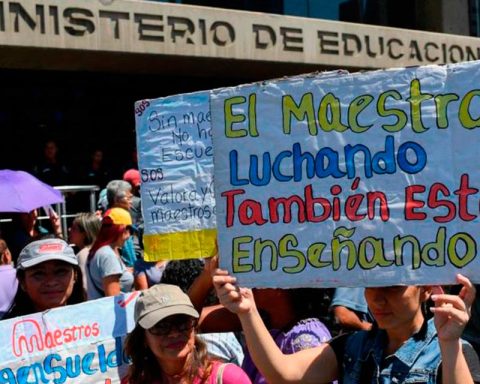The Argentine economy in September grew 3.4% compared to February 2020, as the last pre-pandemic month, and among the largest economies and product of the region it was positioned above Brazil and Mexico, although below Chile and Colombia .
Argentina’s economic activity thus positioned itself among the best performers after a 19-month pandemic, above what was registered in Peru and the United States, with increases of 1.2% and 1.1%, respectively; while Brazil, Canada and Mexico had negative records of 0.7%, 1.4% and 3.8%, and behind Chile (7.2%) and Colombia (3.6%).
The data comes from the report “Indicators of economic activity in the region” published by the Center for Production Studies (CEP XXI) of the Ministry of Productive Development.

Meanwhile, in the month-on-month comparison, Colombia led with a rise of 3.2%, and Argentina and Chile ranked second with increases of 1.2%; while the United States (0.3%), Peru (0.2%) and Canada (0.1%) showed slight variations.
On the other hand, Brazil and Mexico fell 0.3% and 0.4%, respectively, “affected particularly by supply problems in global value chains” since “they are Latin American countries with greater insertion in the manufacturing links” , highlighted the work.
Regarding the yields between the third quarter of this year and the same period of 2019, Argentina ranked fifth with a rise of 0.6%, behind Chile (6.7%), Colombia (3.3 %), The United States (1.9%) and Peru (1.6%).
Argentina recorded four months of uninterrupted growth and the process of economic reactivation began to homogenize in recent months due to an increase in the mobility of people
For their part, Brazil (with an increase of 0.3%), Canada (a drop of 0.7%) and Mexico (a sharp decrease of 4.3%) were the ones that presented the worst records.
Regarding Argentina’s performance in the ninth month of the year, CEP XXI highlighted that, with the results obtained, “it scored four months of uninterrupted growth. The economic reactivation process began to homogenize in recent months due to an increase in the mobility of people ”.
“In fact, the sectors most impacted by the pandemic (such as hotels and restaurants, transportation, and the hydrocarbon sector) continued to improve in September, allowing economic activity as a whole to grow 3.4% compared to previous levels. to the pandemic ”, explained the document.
Argentina also presented good returns when comparing with September 2019, after marking an increase of 4.7% and was again behind Chile (rise of 9.3%) and Colombia (5.8%).
The sectors most impacted by the pandemic (hotels and restaurants, transportation, and the hydrocarbon sector) continued to improve in September, allowing economic activity as a whole to grow 3.4% compared to pre-pandemic levels.
For their part, Peru, the United States and Brazil grew 3%, 2.2%, and 0.7%, respectively, compared to the same month of 2019.
In contrast, Mexico and Canada presented falls of 4.3% and 0.6%.
When conducting an analysis on the data provided, CEP XXI pointed out that “between July and September 2021, most nations grew with respect to the same previous period in the seasonally adjusted measurement, although in September a certain slowdown in the rate of rise ”.
“In any case, a large part of the countries is already operating comfortably at the pre-pandemic levels,” the work added.
For its part, the Brazilian economy fell for the second consecutive month in a context of inflationary pressure and historically high interest rates
Specifically, the good results of September in Chile were explained “by a better performance in services (3.3% per month) in line with a greater reopening of activities”.
Similarly, growth in Colombia was driven by a strong monthly recovery in tertiary activities.
In Peru, “the greater flexibility of sanitary measures” allowed “the recovery of demand in sectors such as tourism and transport,” according to CEP XXI.
For its part, the Brazilian economy fell “for the second consecutive month in a context of inflationary pressure and historically high interest rates.” “The same dynamics observed in Mexico, it fell for the second consecutive time in September to 0.2% per month. At the sectoral level, secondary activities were the ones that fell the most (-1.4% monthly seasonally adjusted) influenced by the lack of inputs, saturation of the port infrastructure and the rise in costs, “the report concluded.
The work of the Study Center aims to carry out a brief analysis of the recent evolution of economic activity in the countries of the American continent as a result of the Covid-19 pandemic, and to provide a regional context to the Argentine situation.
















